|
DJ Jillionaire (inset) owns the new "liming"-friendly Brooklyn bar Clyde's Jillionaire wants NYC to get ready to rum-ble!
“I’ve always been a big fan of rum,” the Trinidad-born DJ, who’s one-third of the EDM trio Major Lazer, tells The Post. When he’s not busy spinning Top 40 hits “Lean On” and “Cold Water” with his groupmates Diplo and Walshy Fire, Jillionaire (real name Christopher Leacock) basically acts as the self-appointed Trinidadian culture ambassador to the US. His current priority: helping his country’s most prized spirit overcome its bad stateside reputation. “People here go to college, drink Bacardi 151 and swear off rum for the rest of their life,” he says. “But, there are fine-aged rums the same way there are fine-aged whiskeys.” The 40-year-old serves up several such varieties, including Angostura 1919 and Banks 7 Golden Age Rum, at his new Williamsburg bar, Clyde’s. Trinidadian head bartender Cyllan Hicks pours the sugarcane-based booze into typical Caribbean cocktails (think rum punches) and more serious potions. Jillionaire’s favorite is the Night Nurse ($14), a riff on an Old Fashioned which swaps the usual whiskey for 8-year aged Bacardi, and tops it off with Benedictine, spiced coffee syrup and chocolate and Angostura bitters. On a recent Tuesday night, bargoers guzzled the Rum Sazerac ($14), with two types of rum, Velvet Falernum and orange bitters. The cozy watering hole is named after Jillionaire’s grandfather, and is next door to Trinidadian restaurant Pearl’s, which the musician also co-owns. Through Clyde’s, Jillionaire hopes to sell New Yorkers on Trinidad’s laid-back booze scene. On the Caribbean island, he says, life is all about “liming,” or “our word for ‘hanging out.’” Trinidad has “a very unique drinking culture. We celebrate everything. We celebrate the weekend. We celebrate the weekday. We celebrate, ‘Oh, it’s Tuesday.’” Think fewer premeditated, Facebook-invite parties and more leisurely happy-hour hangs. After work, “one [drink] turns into two or three,” two friends turn into five or six, “and all of the sudden it’s a big lime.” Be warned: After a few hours’ “liming” at Clyde’s, you may indeed need “somebody to lean on.” Source: NY Post, April 27, 2018 Did you know that not far from Hornerman Lane is Pregnancy Lane? How about Buller Street or Pepper Sauce Road? Here are 10 of the strangest names we've spotted along the roads of Trinidad and Tobago: 1. Pregnancy Lane/Horner Man Lane, Diego Martin These famous (or infamous?) streets in Diego Martin have a sordid history. It is alleged that Hornerman Lane, formerly Trumpet Lane, was so named because the men from that street allegedly wandered over to Pregnancy Lane, formerly Wilson Lane, when the husbands on that street left for work. The name stuck after eight women allegedly became pregnant around the same time about 30 years ago. 2. Buller Street, Port of Spain Contrary to some dirty minds, Buller Street is actually named after General Sir Redvers Henry Buller, a British Army officer who was awarded the Victoria Cross, the highest award for British and Commonwealth forces. He served as Commander-in-Chief of British forces in South Africa during the early months of the Second Boer War and subsequently commanded the army in Natal until his return to England in November 1900. Did you know? Six other streets bear names of members of the British Army who also performed admirably, including Roberts, Kitchener, Baden-Powell, Methuen, McDonald and Gatacre Streets. 3. Pepper Sauce Road, Endeavour, Chaguanas Things must get spicy there. 4. Potato Trace, La Romaine Located off the Southern Main Road, Potato Trace is actually close to Hosein's Meat Shop. You know what they say about meat and potatoes... 5. Sesame Street, Preysal Can you tell us how to get there? Seriously, we don't know. 6. Concerned Citizen Street, Couva It's a rough guess, but we think a concerned citizen decided to finally name this street. 7. Faecal Dump Road, Union Village Located off Naparima Mayaro Road, it's a mystery as to how this street was named. LoopTThas reached out to the councillors for the area for more information on this 8. Mandingo Road, Princes Town
Located off Moruga Road, this road is so long there's actually a Mandingo Road Number One. 9. Soursop Crescent, Malabar Did you know? There's also a Soursop Street in Nassau Bahamas, and a Soursop Lane in Florida, USA. 10. Punch Bowl Road, Mason Hall, Tobago Located off Northside Road, this curious name fits its winding shape. What strange road or place names do you know of in Trinidad and Tobago? Source: The Loop, Feb. 5, 2018 Black Panther actor Winston Duke is not the only success story from his Tobago family. His sister, Cindy M. Duke, is an MD/PhD trained Physician Scientist working in Las Vegas, Nevada.
A Gynecology and Obstetrics (Gyn/Ob) specialist and Reproductive Endocrinology and Infertility (REI) sub-specialist, she is the founder and director of the Nevada Fertility Institute which provides diagnostic and treatment options for women and men. In 1995, at age 17, Duke migrated to the United States with nine-year old Winston and their mother, Cora Pantin. Their mother, in her desire for a better life for her family, sold everything she owned to invest in her children's dreams. From a studio apartment in Brooklyn, Cora let Winston follow a creative path and Cindy persue her dream of becoming a doctor. Winston attended the University of Buffalo and Yale School of Drama. He is today the breakout star in the historic blockbuster movie, Black Panther. Cindy M. Duke earned her medical degree at the University of Rochester School of Medicine & Dentistry, Rochester, NY, where she also gained her PhD in Microbiology & Immunology. She now operates the Nevada Fertility Clinic. Dr. Duke's Clinical and Research Interests include Oncofertility, Fertility Preservation, Investigating the Role of the Microbiome in Reproduction and Eliminating Disparities in Healthcare Access and Delivery for Treatment Infertility. Trinidad and Tobago model Naomi Chin Wing continues to make waves in the fashion industry as she made an exclusive catwalk debut for Alexander Wang at NYFW Autumn/Winter 2018 collections on February 10.
She later walked for nine other brands including Calvin Klein Marc Jacobs Coach Victoria Beckham Prabal Gurung and closed Carolina Herrera's show. Chin Wing was selected to showcase the iconic Venezuelan designer's finale garment as she closed an eponymous career spanning many decades. She debuted internationally in September 2017 at Paris Fashion Week for Yves Saint Laurent and is now based in London where she is represented by IMG Model Management. Chris Nathan, founder of Coco Velvet, said secondary school students will have the opportunity to pursue international modelling careers this summer as CVI will host its annual fashion workshop from July 1 leading up to the Grand Finals of Top Model Trinidad and Tobago on October 14 at NAPA. Source: The Loop, February 2018 The search for the missing grain led to Trinidad and Thomas Jefferson, and now excitement among African-American chefs. Upland red bearded rice, which grows in the Moruga district in Trinidad, turned out to be a missing culinary link between enslaved people in coastal Georgia and a group of slaves who were able to buy their freedom by fighting for the British in the War of 1812. Credit Karsten Moran for The New York Times CHARLESTON, S.C. — Among the biologists, geneticists and historians who use food as a lens to study the African diaspora, rice is a particularly deep rabbit hole. So much remains unknown about how millions of enslaved Africans used it in their kitchens and how it got to those kitchens to begin with. That’s what made the hill rice in Trinidad such a find. The fat, nutty grain, with its West African lineage and tender red hull, was a favored staple for Southern home cooks during much of the 19th century. Unlike Carolina Gold, the versatile rice that until the Civil War was America’s primary rice crop, the hill rice hadn’t made Lowcountry plantation owners rich off the backs of slaves. It didn’t need to be planted in watery fields surrounded by dikes, which meant that those who grew it weren’t dogged by malaria. You could grow it in a garden patch, as did many of the slaves who had been taken from the rice-growing regions of West Africa. This was the rice of their ancestors, sustaining slaves and, later, generations of Southern cooks both black and white. Even Thomas Jefferson was a fan. Some researchers think he is the one who helped spread hill rice throughout the South, giving gifts of the African seed from a 30-gallon cask a ship captain brought him from Africa in 1790. But by World War I, the rice had all but disappeared, a victim both of cheaper imports that were easier to produce and of the Great Migration, in which millions of African-Americans left the rural South. That’s why B.J. Dennis, a Gullah chef from Charleston, was stunned to find the rice growing in a field in Trinidad, tended by a farmer descended from slaves who once lived in Georgia.  In fields dotting the Moruga Hills of southern Trinidad, growers tend rice plants that came from an African strain. It was carried there by slaves from coastal Georgia who had been granted land and freedom in exchange for joining the British military during the War of 1812.CreditCarolina Gold Rice Foundation Mr. Dennis had heard about hill rice — also known as upland red bearded rice or Moruga Hill rice — through the culinary organization Slow Food USA and the Carolina Gold Rice Foundation, the group that brought back Carolina Gold in the early 2000s. He’d also heard stories about it from elderly cooks in his community. Like everyone else, he thought the hill rice of the African diaspora was lost forever. But then, on a rainy morning in the Trinidad hills in December 2016, he walked past coconut trees and towering okra plants to the edge of a field with ripe stalks of rice, each grain covered in a reddish husk and sprouting spiky tufts. “Here I am looking at this rice and I said: ‘Wow. Wait a minute. This is that rice that’s missing,’” he said. It is hard to overstate how shocked the people who study rice were to learn that the long-lost American hill rice was alive and growing in the Caribbean. Horticulturists at the Smithsonian Institution want to grow it, rice geneticists at New York University are testing it and the United States Department of Agriculture is reviewing it. If all goes well, it may become a commercial crop in America, and a menu staple as diners develop a deeper appreciation for African-American food. “It’s the most historically significant African diaspora grain in the Western Hemisphere,” said David S. Shields, a professor at the University of South Carolina and chairman of the Carolina Gold Rice Foundation, who works with Mr. Dennis on historical culinary projects and was with him that rainy day in Trinidad. Mr. Dennis, 38, believes food is the living bearer of history. He has devoted himself to promoting the cooking of the Gullah-Geechee Nation, the descendants of West Africans who lived along the coast from North Carolina to North Florida. Their cooks created the peanut stews, okra-laced purloos and seafood that define Lowcountry cuisine. But how did the rice travel to that field in Trinidad? Dr. Shields has a theory. It begins during the War of 1812, when British soldiers promised land and freedom to a small group of West African slaves along the Eastern Seaboard if they would take up arms against their masters. They did, and each was given 16 acres of undeveloped land in southern Trinidad. They came to be called the Merikins, a Creole rendering of the word American. One group was the Fourth British Marine Company, from the Georgia Sea Islands. The rice, which Dr. Shields believes can be traced to Jefferson’s barrel of seed, was among the crops the group brought with them to Trinidad. The missing piece of the puzzle would have not been found if it hadn’t been for Trinidadian ethnobotanist Francis Morean, a man with Merikin roots who has recorded interviews with most of the 60 or so Merikins still growing hill rice on the island. Mr. Morean had traveled to the American South in September 2015 as part of his exploration of African diaspora cooking. He had heard about Mr. Dennis, but wasn’t able to find him. Then, a few months later, Mr. Dennis reached out to him on Facebook, and the two bonded over their interest in using agriculture to keep their shared heritage alive. Still, no one had made the connection between the rice in Trinidad and the rice that had been lost in the American South. Most students of Gullah-Geechee cuisine thought Carolina Gold was the only rice that enslaved Africans in the coastal South had cooked. Mr. Morean organized a small rice symposium in Trinidad in the winter of 2016, and asked Dr. Shields to present a paper on the island’s hill rice. Also on the guest list were Mr. Dennis and Queen Quet Marquetta L. Goodwine, the elected leader and official spokeswoman of the Gullah-Geechee Nation, who often employs Mr. Dennis to cook for official events. Dr. Shields, who is part of a global effort to find new ways to grow rice on dry land, began his research, and realized that the Trinidad hill rice might be linked to the missing American rice, which in turn could be traced all the way back to the West African rice fields. On that wet morning in Moruga, Trinidad, he had his answer. “When I got out of the car and walked toward the field and saw the rice just about to be harvested, I knew it had to be the real thing,” he said. “It was like you see the story made flesh. You see something that has existed as really an abstract possibility suddenly become real.” Glenn Roberts, the founder of Anson Mills, immediately jumped on board. There is no one as fanatic about Southern heirloom grains as Mr. Roberts, whose South Carolina company led the revival of Carolina Gold rice and several other Southern heirloom grains. Mr. Roberts arranged to have about 80 pounds of the Trinidad rice shipped to the United States. A few pounds made its way to Edouardo Jordan, the Southern chef who opened the restaurant Junebaby in Seattle last year. Mr. Jordan cooked with it and loved it. The rice performs differently in the kitchen than Carolina Gold, which works best in wet or creamy recipes like Hoppin’ John or risotto. Hill rice is better dry, with an okra stew or a sauté or chutney piled on top. Mr. Jordan is so enamored that he is trying to find farmers in the Northwest to grow it, once the seed is approved by the Agriculture Department. “If we can bring this back,” he said, “the historical back story could deepen the development of African diaspora food in America and better tell the real story of Southern food.” At another rice symposium held by the Carolina Rice Foundation in April, Mr. Dennis prepared hill rice for everyone. He cooked it the way he had learned to during his time in Trinidad, simmering it in coconut water until the rice became starchy. Then he covered the rice with chutney made from grinding toasted benne seeds; an herb called shadow benne that is similar to cilantro; some bird’s-eye peppers, and garlic with a little oil. It was delicious. Like many a detective story, this one has some loose ends. Michael Purugganan, a New York University biology professor, was at the Charleston event. He had been part of a team that in 2015 sequenced the genomes of Oryza glaberrima, the African crop now grown by descendants of escaped slaves in the South American country Suriname, and connected it to rice that grew in Ivory Coast. That discovery was concrete evidence of the high level of rice-growing knowledge among African slaves, and marked the first time genetics had been used to pinpoint the origin of a slave crop in the Americas. Could the Trinidadian rice be another example? Dr. Purugganan took the rice to his laboratory in Greenwich Village and sequenced its genes. It turned out not to be indigenous African glaberrima, but more likely a Japonica rice that made its way from Southeast Asia to West Africa between the 16th and 18th centuries. Amy Lawton-Rauh, a Clemson University professor of genetics and biochemistry who is working on the genetics of hill rice, is using population genomics tools to test whether the hill rice has a more complex history. It could even be a hybrid, she said, and not necessarily linked to Jefferson’s rice. So much rice may have been passed around among slave families and descendants that there is no way to be certain where the seed originated, said Christopher Wilson, director of experience design at the Smithsonian’s National Museum of American History. “It might be too much to just give credit to Jefferson,” Mr. Wilson said. “We know about him because we have records. But people miss just how big rice was, and how much money was involved and how much history we have no written record of.” Still, he is as excited as anyone about the hill rice. He has introduced Mr. Roberts to a horticulturist at the Smithsonian to grow and display some of the hill rice. Last summer, Mr. Wilson invited Mr. Roberts to discuss the rice alongside Michael Twitty, a culinary historian and the author of ”The Cooking Gene: A Journey Through African American Culinary History in the Old South” at a Smithsonian event. Mr. Twitty, who first heard about the rice from Mr. Dennis, has embraced it. It fits in nicely with his work, which includes researching the links between Southern food and West African cooking. For the event, Mr. Twitty used it as the base for a chicken stew, made in the style of the Mende people of Sierra Leone, that he cooked with palm oil, onions and garlic. “I don’t really like brown rice at all, but it’s not like that,” he said. His appreciation goes beyond taste: The rice helps validate the African experience in America. “It’s another living artifact that automatically wipes out any nonsense about the earliest years of African-American food,” he said. For now, no one is growing the rice commercially, but Dr. Shields and Mr. Roberts hope it will be embraced by Gullah farmers, and spread from there. In the meantime, they hope to find an economical way to import it from growers in Trinidad. For Mr. Dennis, the chef, a steady supply would ensure that his purloos, like the rice-and-okra dish called Limpin’ Susan (often referred to as the cousin or wife of Hoppin’ John), would have a new dimension. He also hopes that the rice will eventually sell at a price that most cooks can afford, and that African-American home cooks will come to see the hill rice and other traditional dishes as healthier alternatives to a popular perception of soul food. “We’ve been warped into thinking it’s mac-and-cheese and collard greens,” he said. African-American cooking, at least as defined in the Lowcountry, is about slow-cooked peas and vegetables and specific strains of rice, he said. “Culturally, this rice is a hidden story of the African-American and enslaved narrative,” he said. “A lot of our ancestors were not able to read or write, so a lot of stories aren’t able to be told. But we can cook this rice, and we can tell the story.” Source: NY Times, Feb 13, 2018 Upland red bearded rice was once a household staple for enslaved people in the American South. The African rice was thought to be lost until Mr. Morean discovered fields of it being grown in Trinidad.CreditHunter McRae for The New York Times  B.J. Dennis, a chef in Charleston, S.C., has dedicated himself to tracing Gullah-Geechee heritage through food. He traveled to Trinidad and found rice that could be traced back to slaves in coastal Georgia.CreditHunter McRae for The New York Times Conceived by rape, born on a cotton plantation, never certain who her father was, abandoned by her mother, abused as a child because she was "yaller" and was forced to live in the crawl space under the house with the cats.
She rose to become an internationally beloved singer, dancer, actor, and comedienne. She was an anti-war activist and member of the Women's International League for Peace and Freedom, who gained the wrath of President Johnson and was harassed for years by the FBI. A vocal advocate of LGBT rights. Asked about her following from and affinity for the gay community, she said, "We're all rejected people, we know what it is to be refused, we know what it is to be oppressed, depressed, and then, accused, and I am very much cognizant of that feeling. Nothing in the world is more painful than rejection." Eartha Kitt. SHE PERSISTED.  Ottawa, Ontario January 30, 2018The Government of Canada is committed to build a better, more inclusive country that recognizes the contributions of all, and creates better opportunities for more Canadians. The Prime Minister, Justin Trudeau, today announced the Government of Canada will officially recognize the International Decade for People of African Descent. This Decade, which spans from 2015 to 2024, is an opportunity to highlight and celebrate the important contributions people of African descent have made to Canadian society. It also provides a framework for recognition, justice, and development to fight racism, discrimination, and the ongoing inequalities that Canadians of African descent face. The Government of Canada has heard from concerned citizens and organizations from across Canada, including the Federation of Black Canadians, that we need to do more to work with and support Canadians of African descent. In recognizing the International Decade, the Government of Canada commits to a better future for Black Canadians. This means learning more about the issues that affect Black Canadians, including improving research and data collection, so we can better understand the particular challenges they face. Mental health challenges and overrepresentation in the corrections system have been raised in particular by community leaders as barriers to Black Canadians experiencing full and equal participation across society. Over the past two years, the Government of Canada has taken concrete measures to fight inequality and improve the lives of all Canadians, including those of African descent. We have helped parents with the high cost of raising kids through the Canada Child Benefit, and expanded the Canada Pension Plan so more people can retire with security and dignity. We have also made significant investments in student grant programs, mental health initiatives, and affordable child care, and introduced a National Housing Strategy that will solve housing security for many vulnerable Canadians. The Government of Canada will continue to build on these efforts, and create a country where more Canadians have a real and fair chance at success. “Today is an important day for Canada. Our commitment to the International Decade will help us better address the very real and unique challenges that Black Canadians face, and bring us closer to a more just and inclusive country.” —The Rt. Hon. Justin Trudeau, Prime Minister of Canada
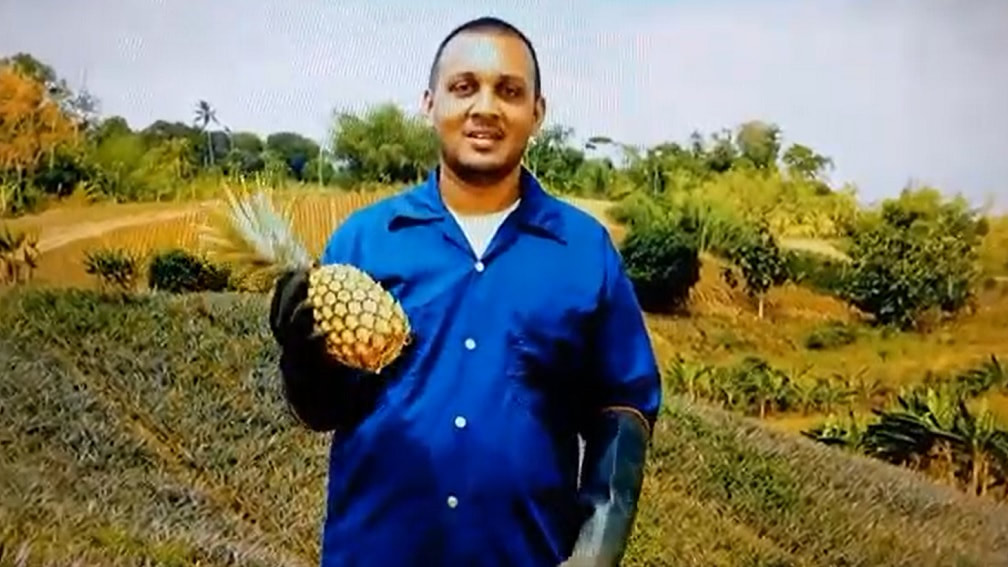 Video footage of Trinidad and Tobago's pineapples and local farmers aired earlier this month on children's television programme Sesame Street, giving well-earned exposure to the country's agricultural industry. The segment aired last month on the international children's show, which is seen in 140 countries. The new segment, called “Cookie Monster’s Foodie Truck” shows Cookie Monster and a new character called Gonger who attempt to make pizza, their favourite food. However, Cookie Monster and Gonger soon find out that the pineapple chunks on their pizza come from Trinidad and Tobago, a tiny twin-island country in the Caribbean. View the video below. (watch to the end to see how it was done)  Gina Parris is determined to become a Hollywood star. But while she continues to seek that breakout role that will make her a household name, she is already making her mark as a producer. Parris’s debut film,' A Twist of Life', was accepted into the Equality International Film Festival and Indie Night Film Festival and shown at Warner Brothers. Indie Night is a festival founded by Dave Brown attended by celebrities and casting directors. Parris’ film was screened in TCL Chinese Theatre in Hollywood which is a historic theatre on the Hollywood Walk of Fame, and a former venue for three Academy Awards. The short was actually Parris’ thesis for her Master’s degree in Film and was inspired by Vera Bhajan, the young lady with no arms who shot to national attention when she excelled at the SEA exam and is now an Attorney. “I wanted to do my film on somebody who is disabled. The main character is Avyanna Wolfe who does everything with her feet, she has some misfortune and ends up on street. It couldn’t be more than ten minutes so I couldn’t show everything so I want to do a feature,” said Parris in an interview from Los Angeles. The film, directed by Shashank Varma, is a story that shows regardless of how challenged you are you could overcome anything if you persevere said Parris. In the movie, Wolfe is a talented, differently abled person, who suffers from low self- esteem and because of that, she tolerates Mercy's abuse. However, she does not let her unhappy experiences eclipse her love for drawing with her feet. Through Andrew Knight's encouragement, Wolfe finds the strength to stand up for herself. After a nerve wrecking ordeal and with the help of the prostitute Bri, Wolfe finally takes the step to break free from her mental jail and embrace whatever help Andrew wants to give her. She leaves Mercy's house to begin a new life. “In the short film you not only see the woman’s physical struggle you see that she is challenged in her way of thinking and you see her journey in overcoming that,” explained Parris who also holds a Master’s in Counselling. “When I went to the panel to defend the movie I went over the 30 minutes I was given. They drilled me. I find disabled people are overlooked, they are underestimated. To prepare for thesis you had to develop the script and I remember looking at the Elephant Man and My Left Foot and I was blown away by how talented these challenged people were and in Vera’s case still is. The film featured four actors: Parris, who played the main protagonist, Natalie Whittle as Mercy, Mc Entire Chloe Paige Flowers as Brie and Parris’ friend Gerry Bednob, a Trinidadian actor known for his roles in '40-Year-Old Virgin' and 'Encino Man'. “I knew Gerry for some years. The person I wanted to do his role as Andrew couldn’t so I called Gerry and I was so lucky he had time the day I needed him for and he said to send the script. I felt so honoured. He is the only male in the short,” she said. Trinidadian artist Rebecca Foster did the drawings for the film. Parris has plans to turn the short into a full-fledged film and plans to do some more filming in Trinidad and is looking for investors or funding to make that a reality. The film was released by her own entertainment company Gina Parris Entertainment. Parris plans to do more projects but her real love is acting. “My main goal is acting, my main joy. I just do producing because it gets my story out but I love acting and writing. I want to excel as an actress. Being out here you have to be able to create your own content. You look at those famous stars and you realise a lot of them producing and acting or directing, they’re always doing something beyond acting. I want to continue doing all of them,” she said. Her projects so far include 'BRAND', a web series created by Andrew Preston in which she plays Sasha, a series for Beverly Hills Hair Free, a series she co-produced called 'Gangsters', created by Freddie Basnight and Tiffany Lewis and the sizzle reel for a mystery- comedy named 'Housewives-R-Us' created and produced by Folake Kehinde. “A documentary was done on me in the USA entitled 'The Honest Honestest truth: Gina Parris is extraordinary'. The show was created by Folake Kehinde. People enjoyed it and were inspired by it. One viewer after seeing it asked if he could help me find funding for my TV series 'The Honest Honestest Truth' which aired in Trinidad,” she said. Parris is also in a web series named 'Amazing Soul Food' which introduces food from other countries on Youtube. She also does voice-overs and is expected to voice Foxy the cat, a mafia boss for Las Vegas Animal World created by Rosa Falu- Carrion. She said the script got selected for the Oaxaxa Film Fest Official selection where it won best focus and perspective as well as Best Global Script. She will be acting as a pirate in 'Paranormal Monster’s Society', a series which will show on Amazon and created by Alonso Dominguez aka Al Domino who is also the person that did the prosthetic hands for the main protagonist in her movie, 'A Twist of Life'. She also has the opportunity to be an Executive Producer for a friend’s big-budget movie which began as a successful mini-series. “No I can’t afford to give the money but if I get investors for the project I will get executive producer credit so again if anyone out there is interested in investing and want more information please contact me,” she appealed. Parris honed her acting chops back home in T&T where she did comedy with Learie Joseph and appeared in 'A Story about Wendy', produced by Sean Hodgkinson. “I acted in church and other small things and when I was young I would write monologues and poems. The turning point for me was when I was 23 years old working in T&TEC and I had a friend interested in poetry and he told me about a show he was going to have and I said if he could do it I could do it too. I am very persistent. I reached out to Errol Fabien for advice and he put me on to people and Learie Joseph taught me comedy acting and I was in Yangatang tent for Carnival,” she said. Reflecting on everything she has accomplished in just over a year, Parris said it wasn’t all peaches and cream but she is persistent and willing to network her way into the bright lights. Source: The Loop, Jan. 8, 2018 |
T&T news blogThe intent of this blog is to bring some news from home and other fun items. If you enjoy what you read, please leave us a comment.. Archives
May 2025
Categories
All
|


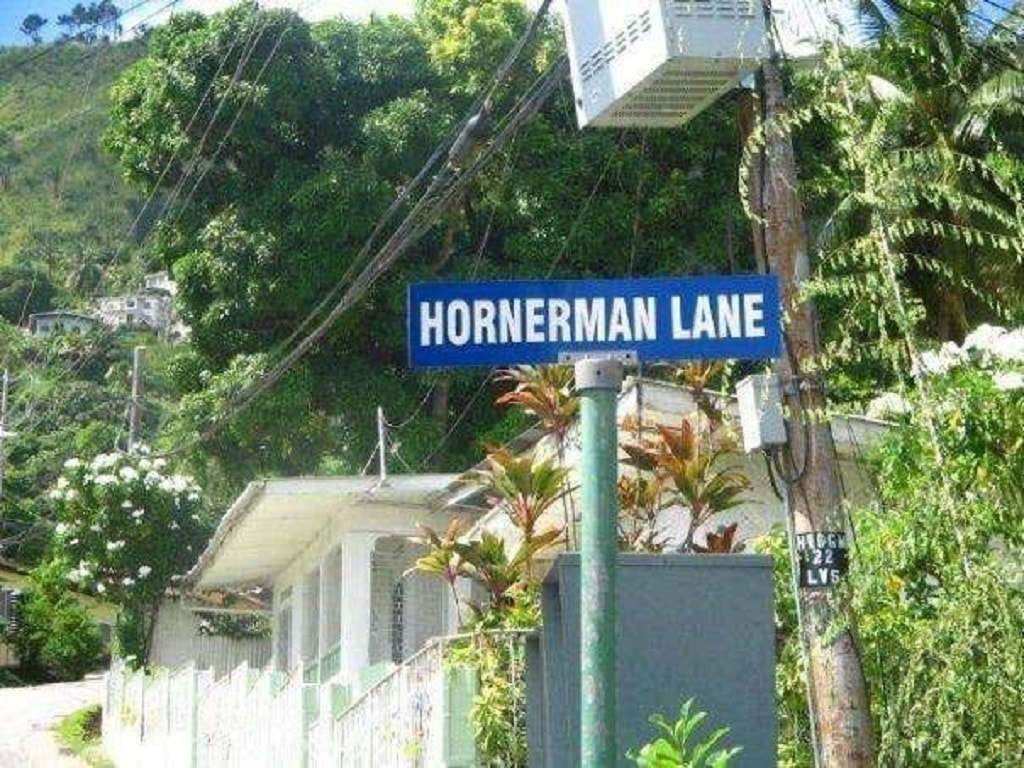

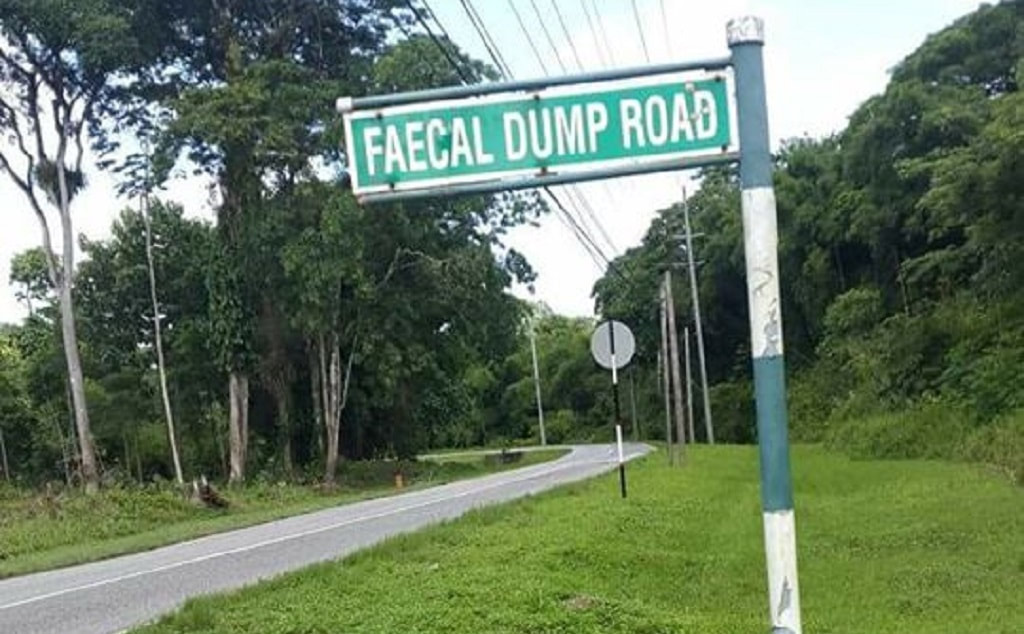



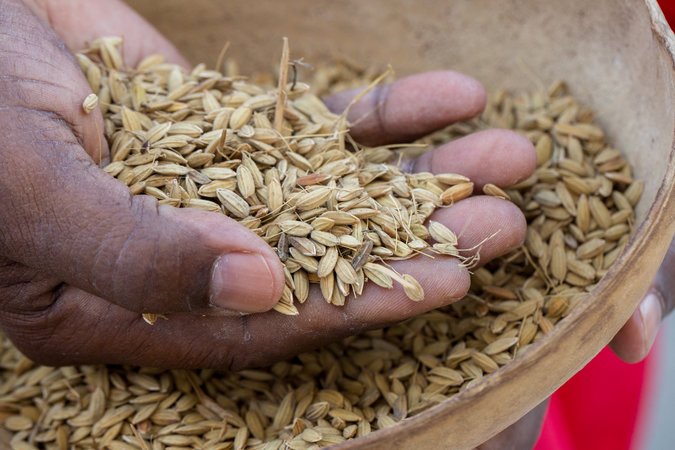
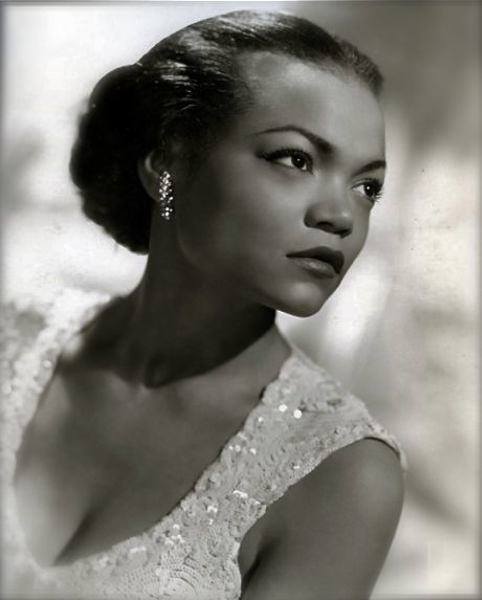

 RSS Feed
RSS Feed